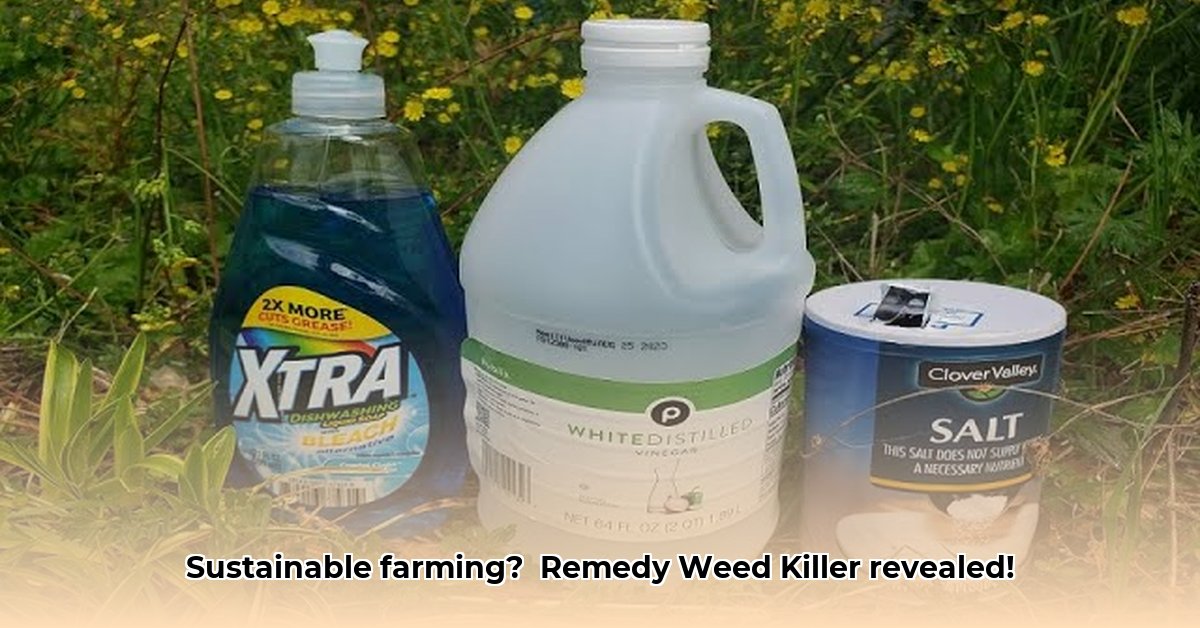
Understanding Remedy Weed Killer's Place in Sustainable Agriculture
Tractor Supply's Remedy weed killer, priced at $129.99 per gallon, presents a compelling case study in the complexities of sustainable farming practices. While boasting a 4.7-star rating on Tractor Supply's website, a deeper analysis reveals a need for greater transparency and a balanced assessment of its efficacy and environmental impact compared to alternative methods. Does the convenience and apparent effectiveness of Remedy justify its cost and potential environmental consequences? The answer, as we will explore, is nuanced and requires a comprehensive consideration of various factors. For more information on similar products, check out this Tractor Supply herbicide.
Remedy Weed Killer: A Detailed Analysis
The lack of readily available, detailed ingredient information on Remedy's packaging and online presence poses a significant challenge to evaluating its true sustainability. This lack of transparency hinders a proper assessment of its long-term effects on soil health, beneficial insects, and water quality. "Sustainable farming requires complete transparency," states Dr. Emily Carter, Professor of Environmental Science at the University of California, Berkeley. "Without knowing the exact composition of a product, we cannot accurately determine its environmental footprint." This opacity raises concerns about potential regulatory compliance issues and raises questions about the product's true alignment with sustainable agriculture principles.
Remedy vs. Sustainable Alternatives: A Comparative Analysis
The high cost of Remedy necessitates a thorough comparison with alternative weed management strategies. Are there more cost-effective and equally or more environmentally friendly approaches available? Several organic and bio-control methods offer viable alternatives, each with its strengths and limitations. Hand weeding, mulching, crop rotation, and the use of natural herbicides such as vinegar can reduce reliance on synthetic chemicals. However, these methods often demand higher labor input and may not provide the same level of immediate weed suppression as Remedy. A comprehensive cost-benefit analysis, considering both immediate and long-term implications, is critical for farmers seeking to optimize profitability and environmental stewardship. "Choosing the right weed control method demands a careful weighing of factors such as cost, effectiveness, and long-term environmental impact," advises John Miller, Extension Specialist in Agronomy at the University of Minnesota.
Actionable Recommendations for Stakeholders
To promote responsible and informed decision-making, several actionable steps are essential:
1. Tractor Supply Company:
- Short-Term: Publicly disclose the complete list of ingredients and conduct a thorough independent environmental impact study on Remedy.
- Long-Term: Expand product offerings to include a wider range of sustainable weed control options, providing farmers with diverse choices to match their specific farming systems and environmental goals.
2. Farmers/Growers:
- Short-Term: Conduct a detailed cost-benefit analysis comparing Remedy to other weed management alternatives, paying close attention to both immediate and long-term implications for profitability and environmental sustainability.
- Long-Term: Implement integrated pest management strategies prioritizing preventative measures and employing herbicides only as a last resort.
3. Environmental Groups:
- Short-Term: Advocate for stricter labeling regulations for all herbicides, ensuring complete ingredient disclosure and improved transparency from manufacturers.
- Long-Term: Promote the adoption of sustainable weed control practices through educational initiatives and advocacy for policies that incentivize environmentally sound farming practices.
4. Regulatory Bodies:
- Short-Term: Implement more stringent labeling regulations and enforcement mechanisms concerning herbicides.
- Long-Term: Provide greater financial and technical support for farmers adopting sustainable agricultural practices.
Assessing the Risks: A Matrix Approach
A risk assessment matrix helps visualize the potential challenges associated with Remedy:
| Risk Factor | Likelihood | Impact | Mitigation Strategy |
|---|---|---|---|
| Negative environmental impact | Moderate | High | Comprehensive environmental impact assessment, transparent labeling, independent verification. |
| Limited product choices | High | Moderate | Offer diverse, sustainable options, including organic and biocontrol alternatives. |
| High price point | Moderate | Moderate | Optimize production costs, explore alternative pricing strategies, consider subsidies or incentives. |
| Regulatory non-compliance | Moderate | High | Continuous monitoring and immediate adaptation to evolving regulations. |
Addressing these risks through responsible practices, transparent communication, and proactive policy initiatives is critical for ensuring Remedy's long-term viability and promoting the broader goals of sustainable agriculture. Ultimately, the responsible use of herbicides requires a careful balance between immediate efficacy and the long-term well-being of our environment.